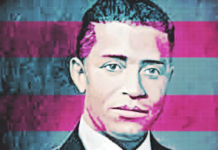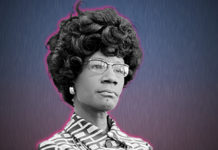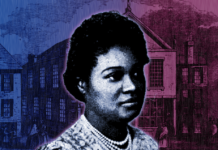It is hard to describe how it has felt to live in the skin I am in for the past two years. All I can share is that on the heels of the murder of George Floyd while in the midst of a global pandemic, I felt a deep need to answer a call.
How can I be a relentless advocate for education equity if I am not walking in the footsteps of my ancestors and parents who shed blood and risked their lives for me?
How can I be a relentless advocate for education equity if I am not walking in the footsteps of my ancestors and parents who shed blood and risked their lives for me?
In September 2020, I set out with seven Black women to walk the 116-miles in the steps of Harriet Tubman on the Underground Railroad Byway from Cambridge, Maryland, to Kennett Square, Pennsylvania to get as close as I possibly could to Harriet’s soul and spirit.

In March 2021, our group, the Daughters of the Underground, walked the 54-miles from Selma to Montgomery to commemorate the 56th anniversary to honor the lives lost and the victory won with the Voting Rights March. Sadly, the day we arrived at the Alabama state capitol is the same day that the state of Georgia passed an abhorrent set of racist voting laws.
As a police officer in Alabama said to us—IT IS STILL 1965.
I have emerged from these experiences a forever-changed Black woman warrior for educational equity
The experiences walking through farmland and on the shoulders of highways in geographies where my people were lynched and beaten are too deep to fully express in a blog. I have emerged from these experiences a forever-changed Black woman warrior for educational equity, who is determined to honor their stories and lived experience by walking in their footsteps.

For me, walking in the footsteps of history has amplified the following:
- To do the work of education justice, my soul mission and my work must be fully intertwined. There is absolutely no separation between who I am and what I do everyday.
- Those of us who work in education who are NOT in schools every day—funders, non-and-for profit organizations, policymakers and advocates—have the least understanding, know-how and experience to change education. We must step aside and make way for lived experience.
- Let the people most impacted lead. We do not walk in the daily shoes of the students and families who are subject to racist and biased systems that have been intentionally constructed to maintain a false-sense of meritocracy.
- Education systems are naturally resistant to the conditions necessary to achieve equity. We must be willing to take alternative routes—the roads less traveled. Put the strategic planning process on the shelf. Engage with the community at a level of depth and proximity that changes who you are as a person.
- The Underground Railroad would have failed without relationships and trust. Recognize that when people in schools and organizations are resistant to equity and anti-racism, it indicates the lack of a foundation built on relationships, networks and community across differences. Find the community advocates and build trust.
- We have 400 years of “solutions” that have not worked for students of color. A “solution” can only be defined, created and validated by those who have lived experiences and new ideas will emerge only if your work is authentically centering people who have not been at the table. Purposefully seek “solutions” that have been created with—not for. Check out the work of the RISE UP Coalition which is an effort I am leading with my colleague, Lydia Logan, to shine a light on culturally-native innovations.
It is impossible for me to reconcile my life with the risk, sacrifice and lost lives of my people. But there are two actions that I can take. I can honor my ancestors by continuing to physically walk the paths they took for justice and freedom and fiercely advocate for centering educational equity in the voices and experiences of disenfranchised students and families. And, in both cases, don’t stop until we have reached the promised land.
Learn more about the RISE UP Coalition and the Center for Inclusive Innovation.










